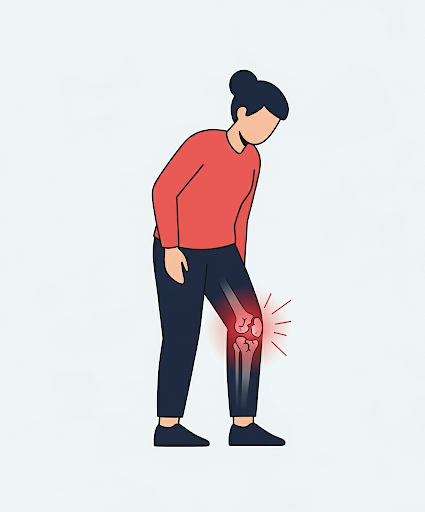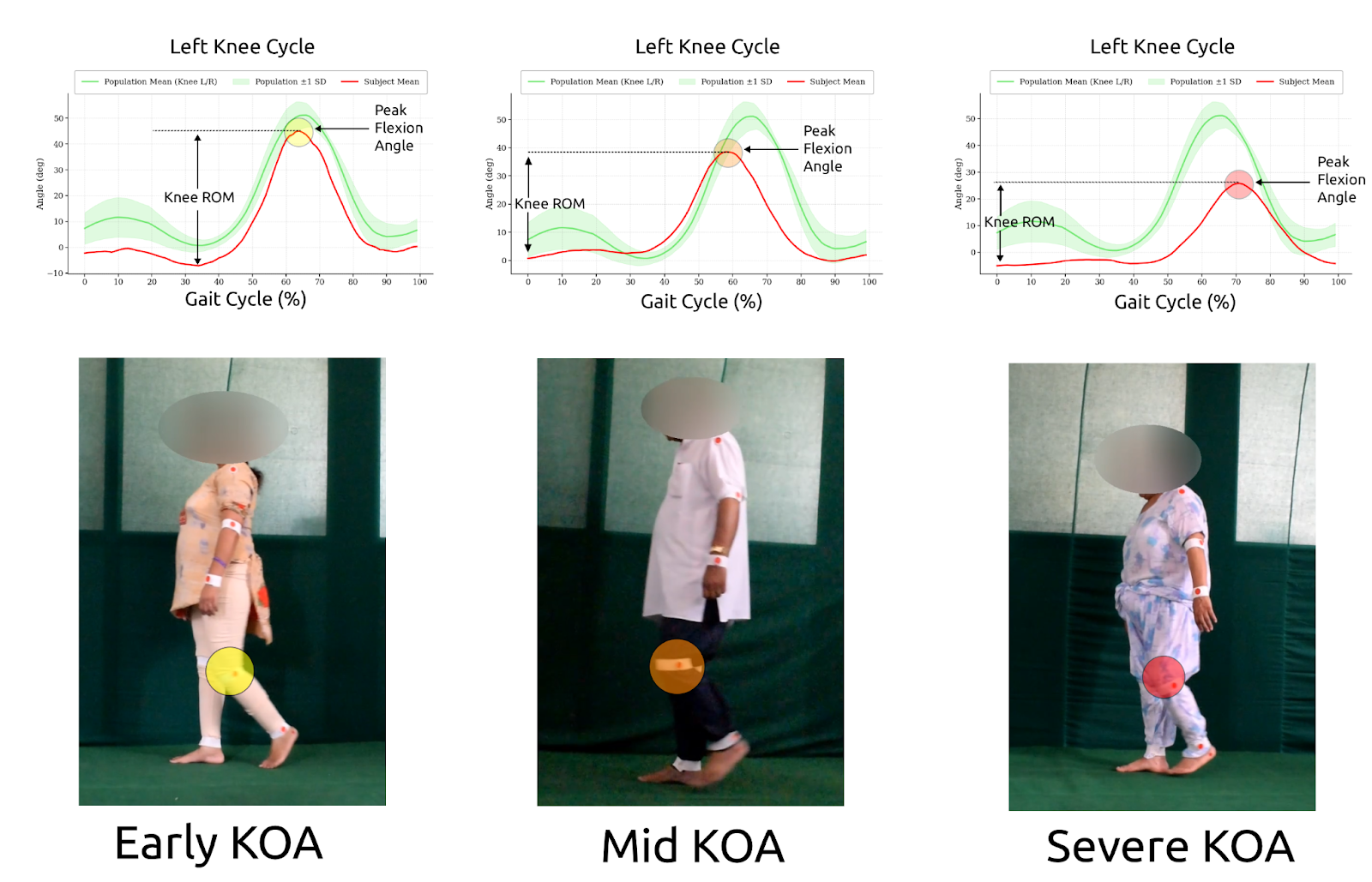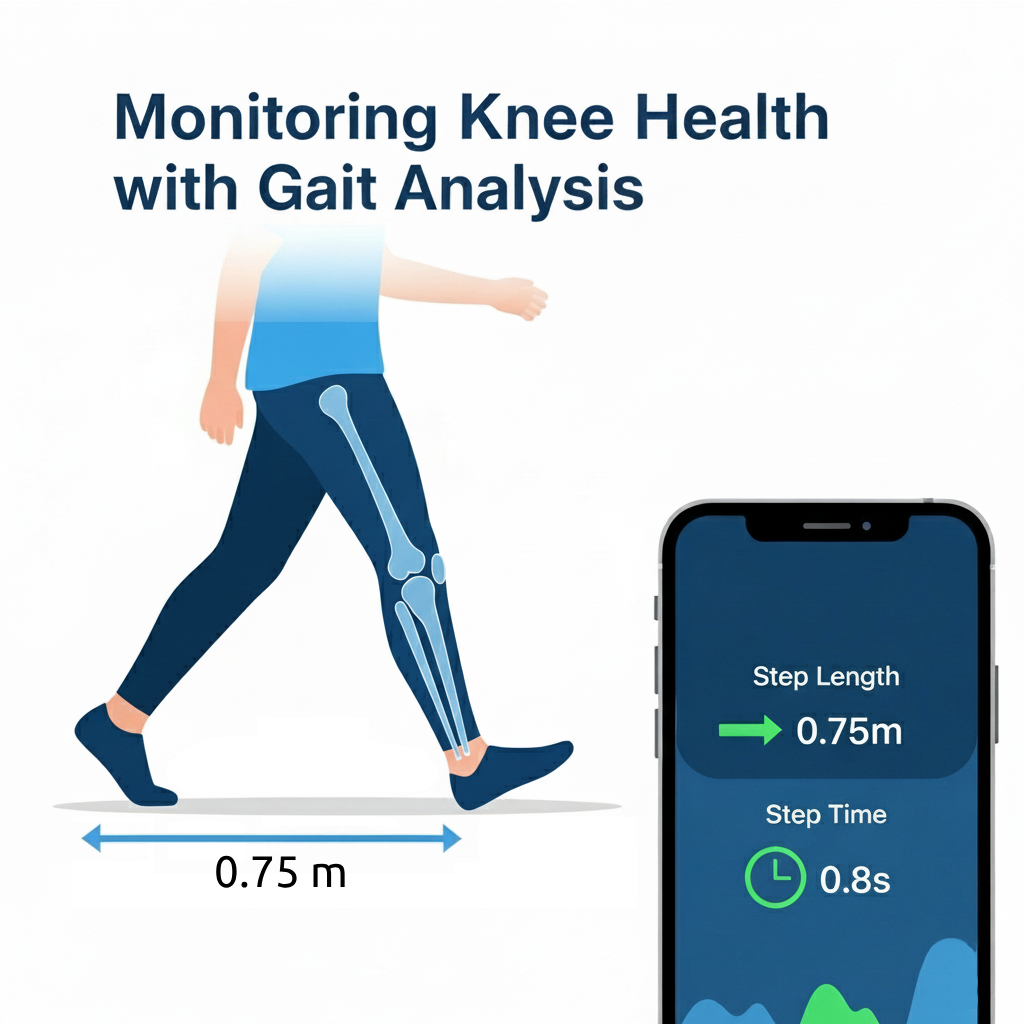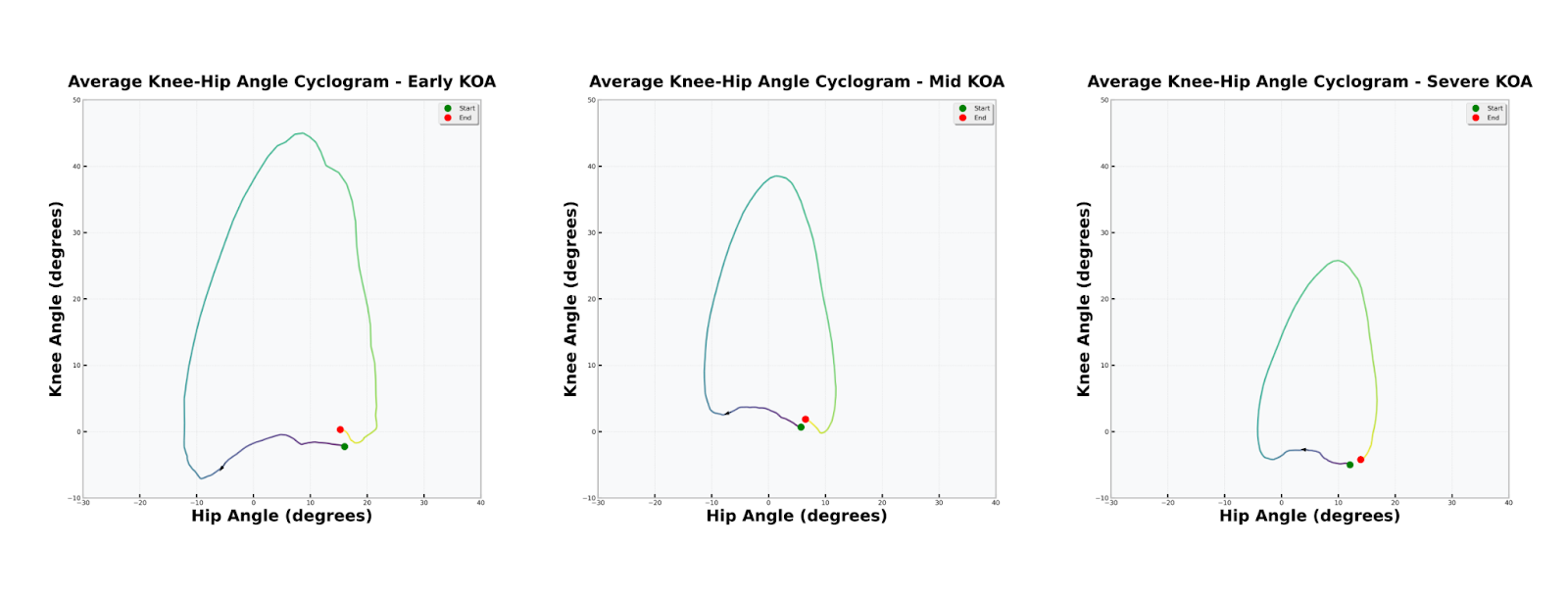
Knee Osteoarthritis (KOA) is a degenerative joint disease in which the protective cartilage in the knee gradually breaks down, causing the bones to rub together. This leads to pain, stiffness, and reduced mobility, making simple daily activities difficult. Unlike rheumatoid arthritis, KOA is not an autoimmune disease. It's a mechanical process of degeneration that worsens without proper management.
KOA is influenced by several risk factors:
• Age: Risk increases significantly after 40.
• Excess Body Weight: Adds mechanical stress to the knee joints.
• Previous Injuries: Damage to ligaments or the meniscus can accelerate wear.
• Genetics: A family history of osteoarthritis increases susceptibility.
• Repetitive Stress: Physically demanding jobs or high-impact sports can strain the knees over time.
KOA patients typically demonstrate slower walking speed, reduced cadence, prolonged gait cycle time, and increased variability in step timing, reflecting cautious and unstable gait patterns. These alterations are accompanied by reduced knee flexion during stance and swing, progressive loss of overall joint range of motion, and diminished hip and ankle mobility, all of which worsen with disease severity.
To reduce stress on the knee, individuals may lean their body toward the unaffected leg or increase the curve in their lower back (increased lumbar lordosis). Additionally, the hip or ankle may exhibit abnormal movements to maintain balance. Due to pain compensation, the pressure distribution on different parts of the foot (e.g., heel or toes) changes. For example, individuals may walk more on their heels to reduce pressure on the knee.

The knee flexion-extension profile across the gait cycle, as captured by the Knee Tracker report, highlights both maximum flexion and overall range of motion for early, mid, and severe stages of KOA. As the disease progresses, both peak flexion and range of motion progressively decrease, reflecting increased joint stiffness and impaired mobility. This objective measurement enables precise assessment of disease severity and provides a reliable method to monitor progression over time, facilitating early intervention or evaluation of therapeutic effects. With Knee Injury Tracker you can establish baselines and monitor changes over time, detecting early asymmetries or weaknesses (e.g., reduced hip flexion or prolonged stance time) and detect the abnormalities before it get worser.
Beyond looking at single joints in isolation, the Knee Injury Tracker also analyzes the coordination between your hip and knee using a hip-knee cyclogram. This plot traces the knee angle against the hip angle throughout a full gait cycle, creating a visual loop that represents the dynamic relationship between these two key joints. In a healthy gait, this loop is typically large, smooth, and consistent, indicating a wide range of motion and fluid coordination. However, in individuals with KOA, the cyclogram often appears shrunken. This reduction in the loop's size directly reflects the decreased range of motion at both the knee and hip, a common adaptation to pain and stiffness.


While there is no cure for KOA, many treatments can relieve symptoms, slow progression, and improve function.
Standard treatments include:
• Medications: Over-the-counter pain relievers or NSAIDs.
• Physical Therapy: Exercises to strengthen the muscles around the knee, hip, and core.
• Lifestyle Changes: Weight management and low-impact activities like swimming.
• Injections: Corticosteroids or hyaluronic acid for temporary relief.
• Surgery: Knee replacement in severe cases.
Studies show that personalized adjustments, like changing your foot angle by 5-10° or increasing trunk sway, can provide pain relief comparable to medication. Because gait retraining is highly personal, an initial quantitative assessment—like the one provided by the Knee Injury Tracker—is crucial for success.
Understanding how your body moves is the first step toward managing KOA effectively. The Knee Injury Tracker provides the data you and your healthcare provider need to make informed decisions about your treatment plan. By tracking your gait parameters, you can monitor your condition, measure the impact of physical therapy or gait retraining, and stay ahead of disease progression.
Ready to start your journey to better movement? Download the Knee Injury Tracker today!
[1] Kour, Navleen; Gupta, Sunanda; Arora, Sakshi (2020), "Gait Dataset for Knee Osteoarthritis and Parkinson's Disease Analysis With Severity Levels", Mendeley Data, V1, doi: 10.17632/44pfnysy89.1